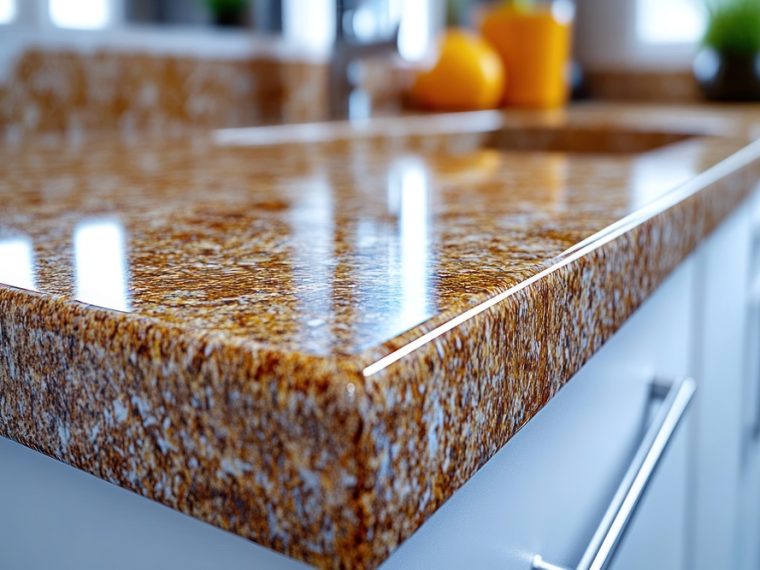Kitchen renovations bring plenty of decisions. However, picking countertops might be the trickiest. Granite keeps showing up on wish lists. There’s a solid reasoning behind that popularity. This stone does things synthetic materials can’t quite pull off. Anyone trying to figure out what to install should know what granite actually offers.
What Makes Granite Special
Deep underground, molten rock cools down over millions of years. When it does so, it becomes granite. That slow cooling creates those crystal patterns you see. Because of this, every piece looks different. Walk through a stone yard and you won’t find two identical slabs anywhere.
Quartz and feldspar make up most of granite’s composition, which explains why it’s so tough. On the Mohs hardness scale, granite scores a solid seven. Diamonds hit ten, steel knife blades sit around 5.5. Your kitchen knives won’t scratch granite unless you really work at it.
The colors come from mineral content. Iron creates reds and pinks. Hornblende and biotite produce blacks and grays. Amazonite brings green to the party. These minerals formed naturally, so the patterns run all the way through, not just on the surface like some manufactured products.
Daily Life with Granite
Here’s what happens after installation: that screaming-hot Dutch oven can go straight onto granite countertops. The cast iron skillet you just used for cornbread? Same deal. The good folk over at Bedrock Quartz explain to us that granite formed at temperatures above 2,000 degrees Fahrenheit. Therefore, your 450-degree baking dish is not going to hurt it.
Scratches rarely happen during normal cooking. Some people chop vegetables directly on granite. Nevertheless, cutting boards still make sense for protecting knife edges. Properly sealed granite also keeps bacteria from settling in. This simplifies post-dinner cleanup.
But granite has its quirks. Wine spills need attention within reasonable time. Lime juice from taco night shouldn’t sit overnight. You’ll spend around twenty minutes a year applying sealant. Don’t skip this step, or stains could set in.
The weight surprises people. Twenty pounds per square foot adds up fast. Three friends can’t just muscle a slab into place on Saturday afternoon. Installers bring suction-cup lifters and know exactly how to maneuver these beasts without cracking corners.
Styles and Selection
Granite comes in hundreds of varieties. Basic speckled gray costs less but still looks sharp. Wild patterns with gold veining and blue swirls cost more and definitely grab attention. Black granite photographs beautifully but shows every crumb and fingerprint; something to consider if constant wiping sounds annoying.
Showroom lighting lies. That perfect slab might look yellow under your kitchen’s warm LEDs or turn grayish near north-facing windows. Take samples home. Live with them for a week. Watch how breakfast sunlight hits differently than dinner-prep fluorescents.
Edge profiles change the whole look. Squared edges feel modern. Bullnose edges soften things up. Ogee edges add traditional flair. The same granite slab can read casual or formal depending on edge treatment.
Investment and Installation
Expect $40 to $200 per square foot installed. Good installers minimize seams. They’ll study your cabinet layout and suggest where breaks between slabs make sense. They also template everything precisely because granite doesn’t forgive measurement errors. That sink cutout gets one shot. Property values often jump with granite installations. Real estate agents mention granite within the first minute of kitchen tours. Buyers recognize it instantly and factor it into offers.
Conclusion
Granite delivers on multiple fronts without demanding much in return. Yes, the upfront cost stings. Yes, you’ll need professionals for installation. But then you get decades of reliable performance from surfaces that started forming before dinosaurs existed. For homeowners who cook regularly and want countertops that shrug off daily chaos, granite makes sense.





